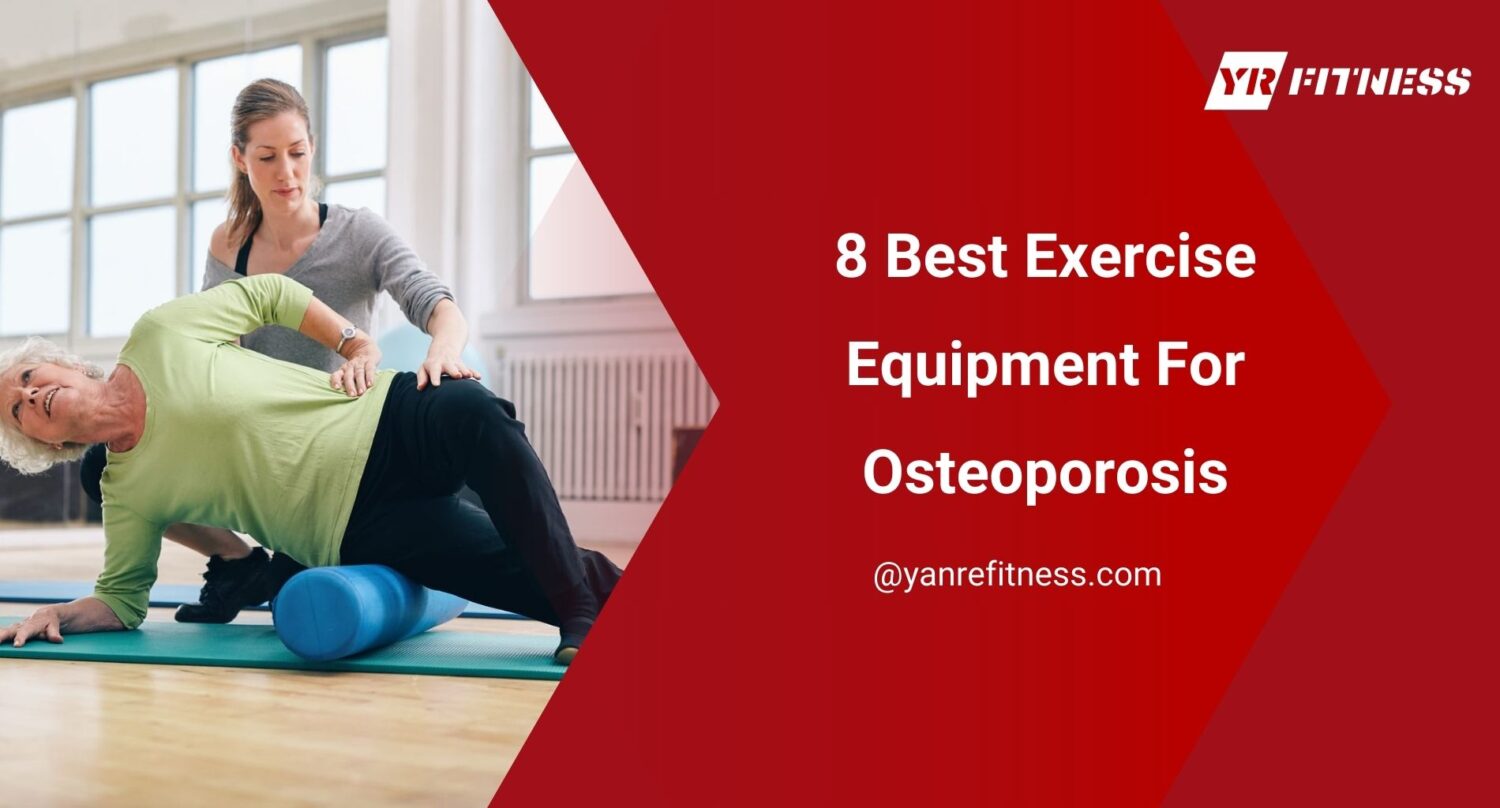I still remember the day my aunt fell.
It wasn’t a big fall. Just a small misstep. But her wrist snapped instantly. The doctor said it was osteoporosis—and that it had likely been getting worse for years.
That moment changed how I looked at exercise. I realized that the wrong kind of movement could do serious damage. But the right equipment? It could help protect bones and even improve them.
Over the years, I’ve worked with fitness professionals, therapists, and equipment suppliers. I’ve seen what helps and what doesn’t.
This article covers 8 machines that are safe, practical, and proven to support bone health. If you’re looking for the right equipment to improve strength and reduce fracture risk, this will give you the answers you need.
So let’s get down to it!
- Quick Comparison Chart
- 1. Seated Leg Press Machine
- 2. Elliptical Cross Trainer with Moving Handles
- 3. Chest Press Machine (Selectorized)
- 4. Recumbent Cross Trainer
- 5. Treadmill with Shock-Absorbing Deck and Side Rails
- 6. Upright Stationary Bike
- 7. Functional Trainer / Cable Pulley System
- 8. Whole Body Vibration Platform
- Conclusion
Quick Comparison Chart
Before we go deeper into each option, take a moment to scan this table. It highlights the essentials, so you can quickly spot what stands out.
Machine | Impact Level | Weight-Bearing | Best For | Key Support Features | What to Avoid |
Seated Leg Press Machine | Low | Yes | Lower body strength, fall support | Adjustable seat angle, large footplate, safety stops | Full knee extension, overload |
Elliptical Cross Trainer (Handles) | Very Low | Yes | Full-body cardio with joint safety | Low step-up height, cushioned pedals, dual moving handles | High step-up, posture neglect |
Chest Press Machine (Selectorized) | Low | No | Upper body strength and posture | Horizontal press arms, padded backrest, selectorized weight | Poor seat height, rigid movement |
Recumbent Cross Trainer | Very Low | No | Cardio for users with low stamina | Reclined seat with lumbar support, strapped pedals, smooth ride | No seat adjust, no step-through, high resistance |
Treadmill with Side Rails | Medium | Yes | Walking for bone support | Shock-absorbing deck, side rails, emergency stop | Running, steep inclines, hard decks |
Upright Stationary Bike | Very Low | No | Cardio with upright posture | Padded seat, magnetic resistance, balance support grips | Slouching, narrow/unpadded seat |
Functional Trainer / Cable Pulley | Very Low | Variable* | Functional strength & balance | Adjustable pulleys, light weight stack, multiple grip options | Explosive moves, too much resistance |
Whole Body Vibration Platform | Very Low | Mild | Passive stimulation, cooldown use | Low-frequency settings, safety rails, preset programs | Long sessions, unsupervised use, high frequencies |
Next, we’ll walk through each of the 8 machines one by one so you can make an informed choice.
1. Seated Leg Press Machine
I once worked with a woman who had lost confidence in her legs after a minor fall. She wanted to get stronger, but every time she stood at a squat rack, she hesitated.
The seated leg press machine gave her that confidence back. It supported her back, guided her motion, and helped her build strength—without fear or pain.
Key Features
- Adjustable seat angle and back support: Reduces pressure on the spine and makes it easier to maintain good posture.
- Large footplate and smooth resistance: Helps the user feel more stable and in control during each rep.
- Range-limiting safety stops: Prevents the knees from bending too far or locking out at the top.
These features help clients feel safer—and more willing to use the machine regularly.
What to Avoid
Even safe machines can be risky if used incorrectly. Remind users:
- Don’t overload the weight. Start light. Build up slowly.
- No full knee lockout. Locking out can stress joints. Teach them to stop just short of straight.
Used right, this machine builds strength without adding risk. And that’s what matters most.
Why It’s Ideal for Osteoporosis
It strengthens the hips, thighs, and glutes, which helps lower the risk of falls by improving stability. The seated position allows resistance training without loading the spine, making it safer for those with fragile bones.
At YR Fitness, we design our leg press machines to support this kind of training—controlled, supported, and effective for clients with osteoporosis.
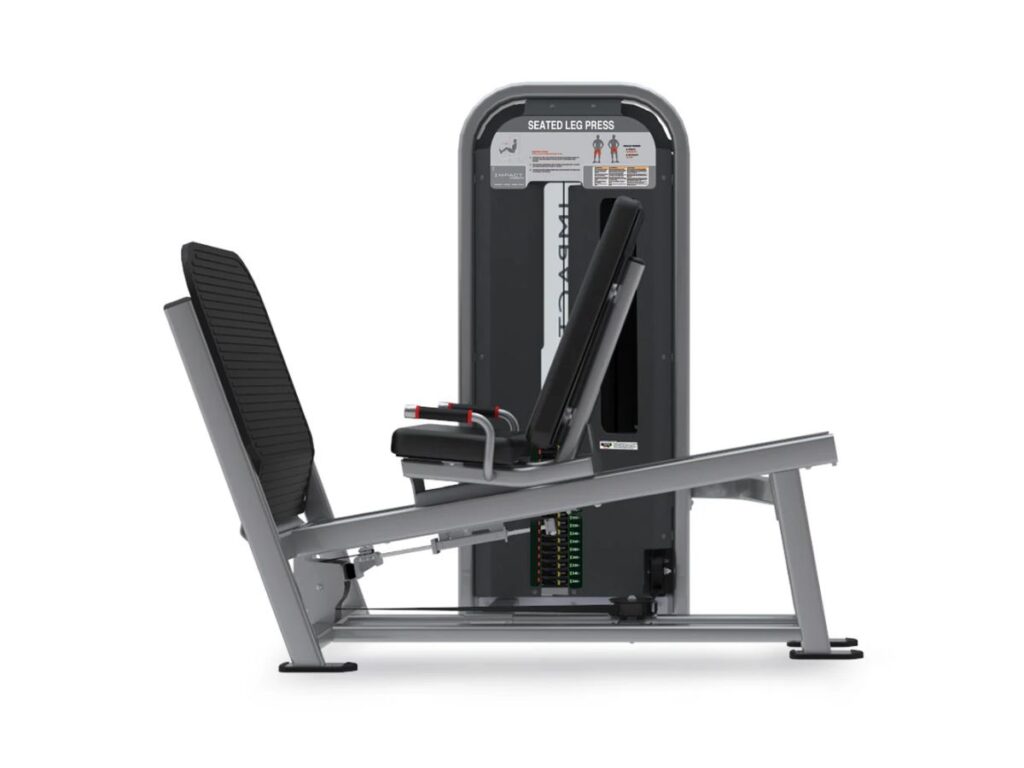
2. Elliptical Cross Trainer with Moving Handles
If you’ve ever helped someone with osteoporosis choose cardio equipment, you know how tricky it can be. Treadmills feel too rough. Stationary bikes don’t work the upper body. And most machines don’t offer the support older users need.
That’s why the elliptical cross trainer with moving handles stands out. It’s smooth, low-impact, and keeps the whole body moving—all without leaving the ground.
Key Features
- Low step-up height: Easier to mount and dismount, especially for those with balance concerns.
- Cushioned foot pedals with edge lips: Keeps feet stable and adds comfort throughout the session.
- Dual moving handles with soft grip: Engages the upper body without stressing the wrists or shoulders.
These features add comfort and confidence, making it easier for users to stay consistent with their workouts.
What to Avoid
Not all ellipticals are a good fit for older adults or those with low bone density.
Avoid machines such as:
- Have high step-up height and no side rails: These increase the risk of tripping or falling.
- Lack resistance controls: Users need to adjust the intensity based on their ability.
- Allow poor posture: Overuse without checking alignment can lead to strain in the back or neck.
Why It’s Ideal for Osteoporosis
Many trainers recommend ellipticals for osteoporosis clients due to their joint-safe motion and posture support. At YR Fitness, our cross trainers are built with smooth stride motion and reinforced balance features for long-term durability in commercial settings.
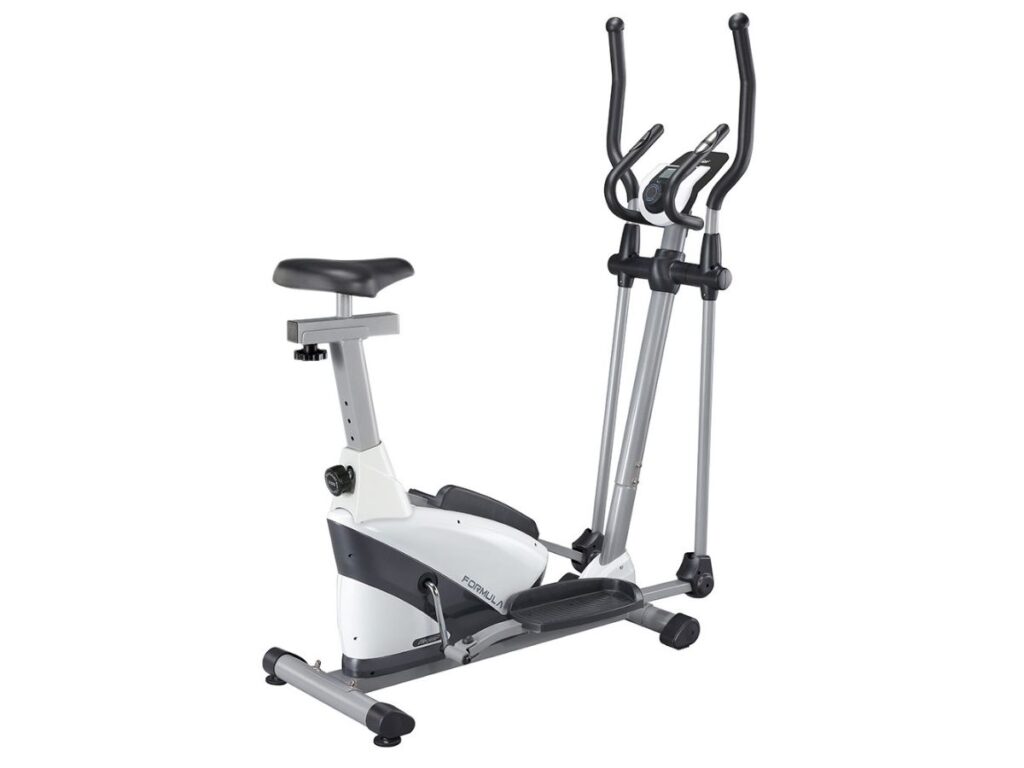
3. Chest Press Machine (Selectorized)
You can hear the difference. The smooth glide of a selectorized chest press feels nothing like the clatter of free weights. There’s no wobble. No need to balance a bar overhead. Just a steady push that helps your clients build strength—without fear of tipping or twisting.
I remember one client who said, “This is the first time I’ve worked my arms and felt safe doing it.” That moment made it clear: a well-designed chest press isn’t just useful—it’s empowering.
Key Features
- Padded back and seat: Offers comfort and support while keeping the spine in proper alignment.
- Horizontal press arms: These are easier to reach and help guide the arms in a natural motion.
- Adjustable resistance with a selector pin: Lets users change the load without needing to shift positions or lift plates.
What to Avoid
Poor design or setup can make the machine uncomfortable—or even risky.
Here’s what to stay away from:
- Improper seat height: If the seat is too low or too high, the shoulders carry too much stress.
- Press arms that sit too far back: Reaching too far can strain the chest and shoulder muscles.
- Machines with rigid or jerky motion: Smooth movement helps keep joints safe and the motion controlled.
Watch your clients during their first few sessions. A small adjustment in seat height or arm path can make a big difference in comfort and safety.
Why It’s Ideal for Osteoporosis
It builds strength in the chest, shoulders, and arms, which helps support better posture and upper-body mobility. The seated, supported position is safer than free weights, reducing the chance of imbalance or strain. It also encourages proper spinal alignment, which is key for protecting the back during resistance training.
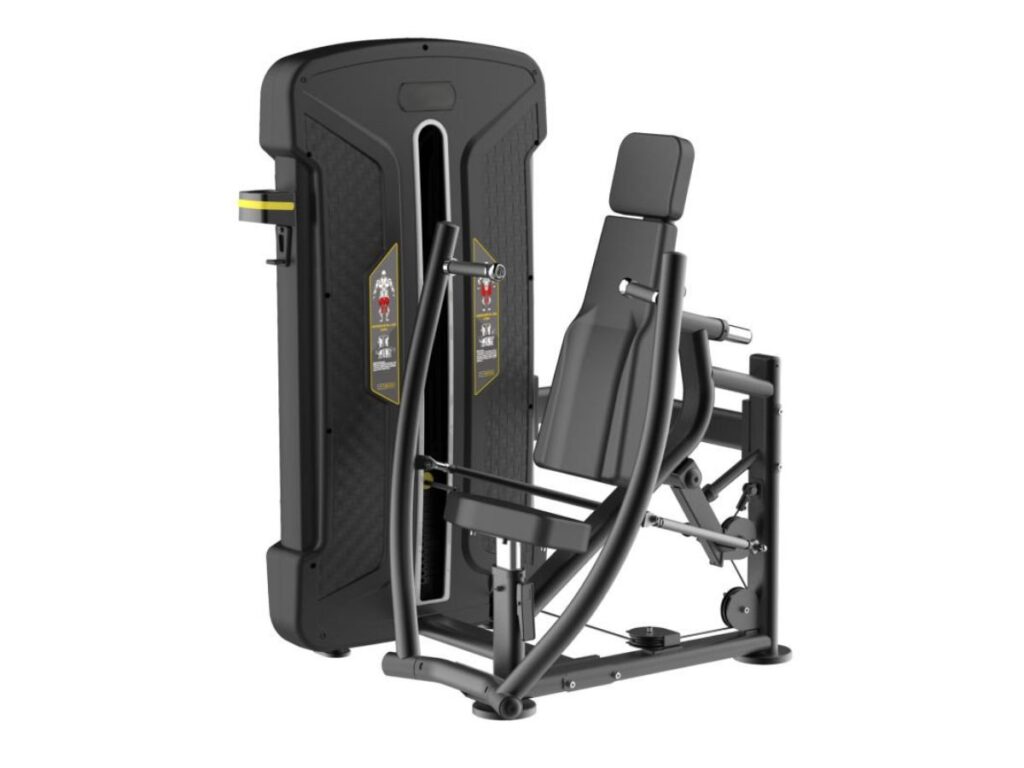
4. Recumbent Cross Trainer
If you’ve worked with clients who struggle to stay active, you’ve likely seen it—shortness of breath, shaky balance, or that quick glance toward the nearest seat.
That’s why I always keep a recumbent cross trainer close by. It’s one of the few machines that lets your clients sit back, stay steady, and still get a real workout. You can see the relief on their faces when they realize they can move without pain or fear.
Key Features
- Reclined backrest with lumbar support: Takes pressure off the spine and makes longer sessions easier.
- Strapped pedals and ergonomic hand grips: Keeps hands and feet in place so your client stays steady throughout.
- Smooth, consistent resistance: Avoids sudden jumps in difficulty and helps build stamina safely.
These features are especially helpful for older adults or anyone with joint sensitivity or limited endurance.
What to Avoid
Some models can create more challenges than solutions.
Watch out for machines that:
- Lack seat adjustment options: A fixed position can cause discomfort and poor alignment.
- Have no step-through access: Makes it harder for users with mobility issues to get on and off safely.
- Allow high resistance settings too early: This increases the chance of fatigue or joint pain.
A good setup helps your clients feel in control—and makes them more likely to keep coming back.
Why It’s Ideal for Osteoporosis
It combines both cardio and resistance training in one safe, seated position. There’s less stress on the hips, knees, and spine, making it easier for those with fragile bones to move comfortably. It’s also great for clients with balance issues or low stamina, giving them a supported way to stay active and build strength over time.
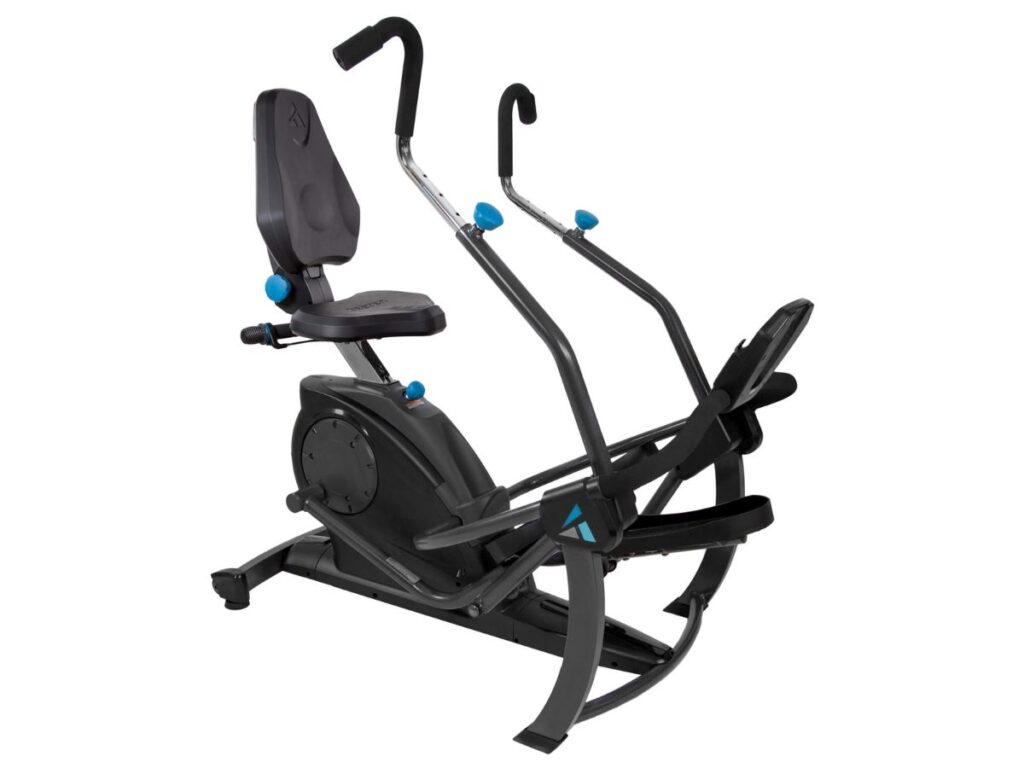
5. Treadmill with Shock-Absorbing Deck and Side Rails
You’ve probably seen it—someone wants to stay active, but they’re nervous about walking outside. Cracks in the sidewalk. No handrails. Slippery weather. It’s just too risky.
That’s when a treadmill with a shock-absorbing deck and side rails becomes a smart choice. It brings walking indoors, where your client can move safely, hold on when needed, and stay consistent with their routine.
Key Features to Look For
- Shock-absorbing belt and deck: Helps reduce the force on the knees, hips, and lower back.
- Long side rails: Gives users something to grip if they feel unsteady.
- Emergency stop key or auto-stop function: Adds safety in case of fatigue or missteps.
These features work together to create a more stable walking experience, especially for users with low bone density or balance concerns.
What to Avoid
Some treadmills just aren’t made for clients with osteoporosis.
Here’s what to avoid:
- Running or steep inclines: These can increase pressure on bones and joints.
- Hard-surface decks with no shock absorption: Too much impact can lead to pain or even fractures.
- Treadmills without handrails or assistive features: Older adults need that extra support to feel secure.
Even small features like rail placement or deck cushioning can change how safe a treadmill feels.
Why It’s Ideal for Osteoporosis
It helps maintain bone density through steady, weight-bearing activity like walking. Side rails add support and make users feel more confident while they move. And the shock-absorbing deck protects joints and the spine from unnecessary impact—something that’s critical for anyone with fragile bones.
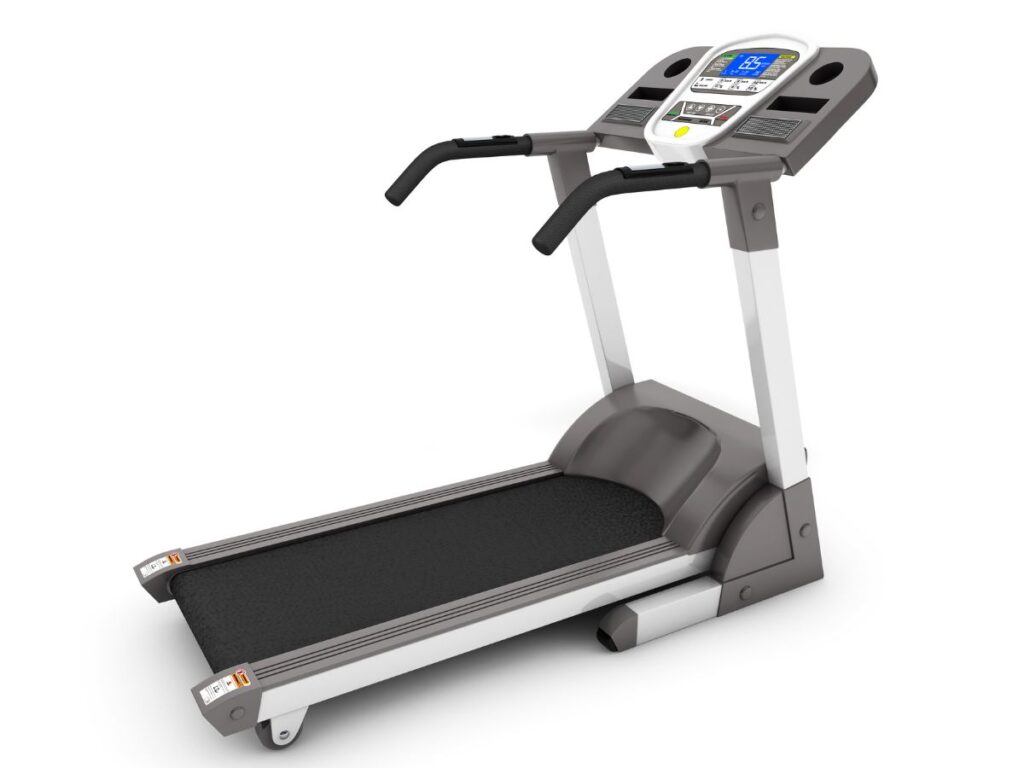
6. Upright Stationary Bike
“I want to stay active,” one client told me, looking at the row of machines, “but I’m afraid to hurt my back.”
She wasn’t alone. Many people with osteoporosis feel the same way—worried that movement might cause more harm than good. That’s when I point them to the upright stationary bike. It’s one of the best options for gentle cardio that doesn’t stress the bones or joints.
Key Features
- Adjustable padded seat: Helps users sit comfortably and keep their spine in the right position.
- Magnetic resistance: Offers a quiet, smooth ride with easy changes in intensity.
- LCD display with easy-to-read metrics: Tracks time, distance, and heart rate so users stay informed without strain.
These small features can make the bike feel more inviting—especially for users who are hesitant or just starting out.
What to Avoid
Even a simple bike ride can go wrong without the right setup.
Avoid bikes such as:
- Have narrow or unpadded seats: These can cause discomfort, especially for longer rides.
- Lack support grips: Users with balance concerns need something to hold while mounting or riding.
- Allow long sessions without posture checks: Slouching can add pressure to the lower back and neck.
Keeping the setup safe and supportive makes all the difference in helping users stay consistent.
Why It’s Ideal for Osteoporosis
It gives users non-impact cardio, which helps build endurance in the lower body without strain. The upright position supports those with spinal concerns who need back alignment during exercise. And it increases blood flow and stamina while keeping the joints protected—a gentle but effective way to stay active.
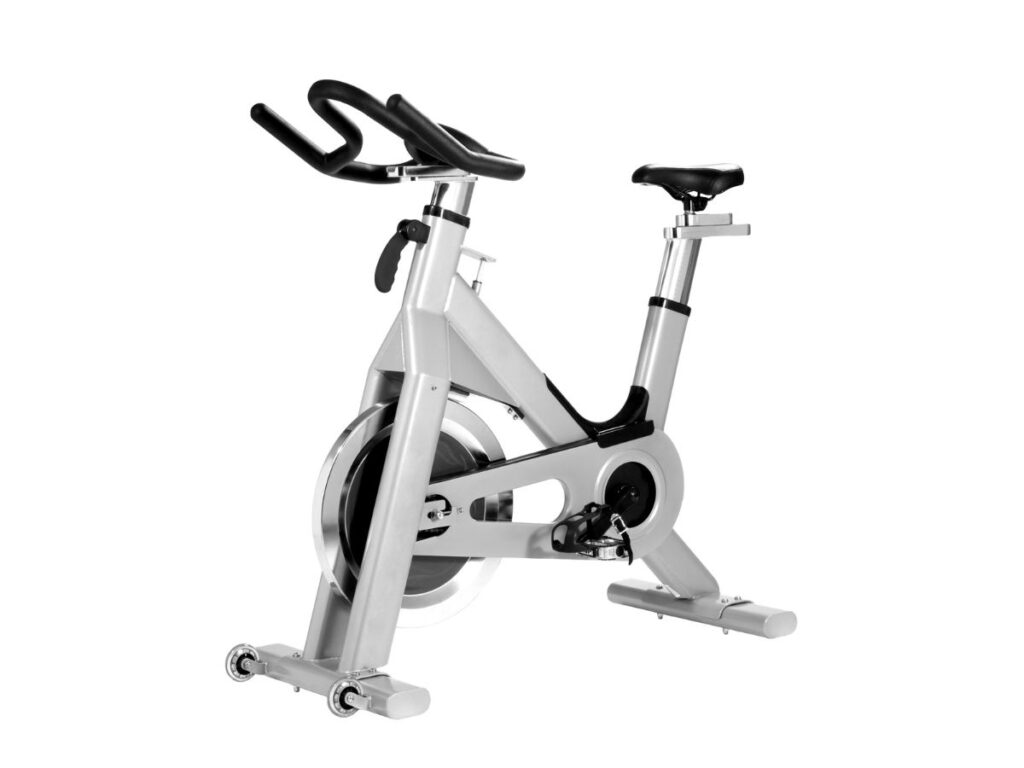
7. Functional Trainer / Cable Pulley System
If you’ve ever watched someone struggle with a dumbbell, you know the fear in their eyes.
“What if I drop it?” or “What if I twist wrong?”
You’ve probably asked yourself the same thing when working with clients who have osteoporosis. That’s why I always recommend the functional trainer. With cables and adjustable arms, it gives you control, flexibility, and strength training—all without heavy strain.
Key Features
- Dual adjustable pulleys: These let you set the height and angle for almost any movement.
- Lightweight stack options: Great for beginners or rehab settings. Users can start lighting and building up.
- Variety of grip attachments: Handles, bars, and ropes help you target different muscle groups in a comfortable way.
These features give your clients more freedom while still keeping them supported and safe.
What to Avoid
Cables are smooth—but they still require guidance.
Make sure to avoid:
- Fast or explosive movements: These can increase the risk of pulling too far or losing control.
- Too much resistance too soon: Always start light and add slowly over time.
- No grip or tension control: Machines without secure handles or tension settings can be harder to manage safely.
A calm, guided session makes for better form and better results.
Why It’s Ideal for Osteoporosis
It allows for strength training with less stress on the joints and spine. The cables encourage smooth, controlled movement that supports balance and posture. And because the motion follows your body’s natural path, it’s one of the safest ways to train with resistance.
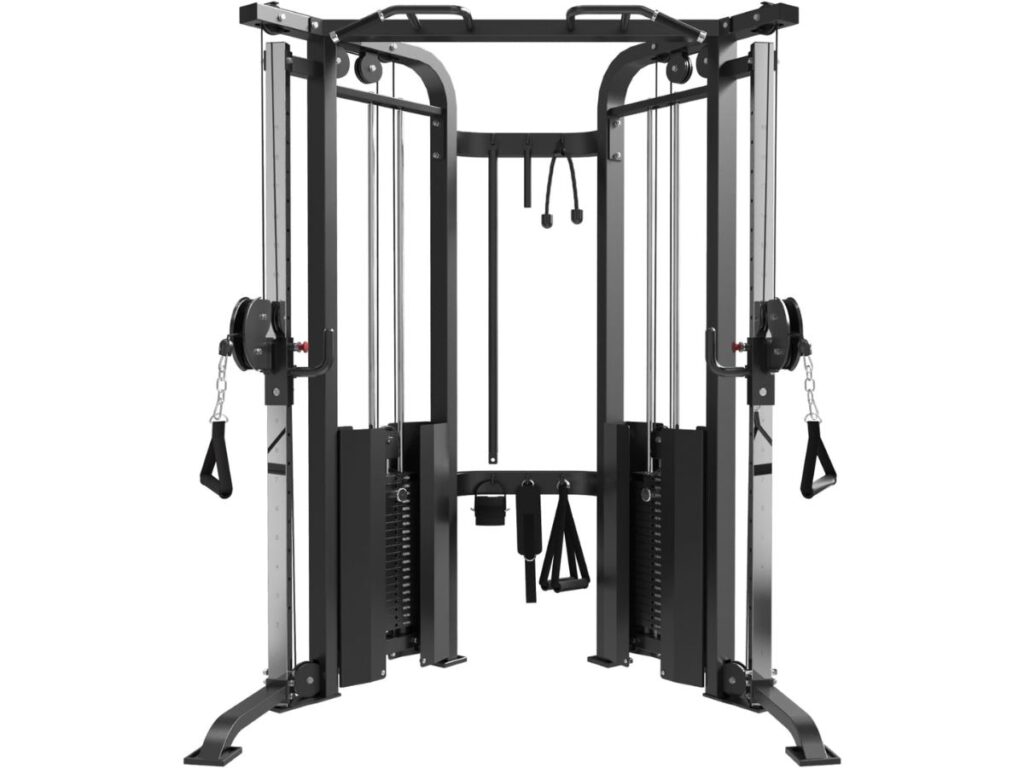
8. Whole Body Vibration Platform
You might be surprised at how many clients feel better with just a few minutes on this machine. I’ve had people say, “I didn’t even move—but I feel like I worked out.”
The whole body vibration platform isn’t about sweat or reps. It’s about stimulation—gentle, low-impact vibrations that help activate muscles and support balance. For clients with osteoporosis, that’s a smart way to start or finish a session.
Key Features
- Low-frequency vibration (10–30Hz): This range is often used in rehab and therapy settings. It’s gentle but effective.
- Stable base with safety rails: Balance support is critical. Users should feel grounded and secure.
- Preset program options: Quick-start buttons let users choose short, structured sessions without guesswork.
These features help your clients feel confident while using a machine that might be unfamiliar at first.
What to Avoid
Vibration therapy has its place—but it also has limits.
Here’s what to avoid:
- Unsupervised use by untrained individuals: Even though it looks simple, guidance matters.
- Using for long durations: Sessions should be short—10 to 15 minutes is usually enough.
- High-frequency settings without medical clearance: Higher settings may not be safe for users with low bone density or circulation issues.
Always introduce this machine slowly and explain how it fits into a full routine.
Why It’s Ideal for Osteoporosis
It stimulates muscle and bone without requiring active movement, which is great for users who need a gentler approach. It also supports balance and joint coordination—important for preventing falls. That’s why many trainers use it for cooldowns or short therapy-based sessions to help clients finish strong and steady.
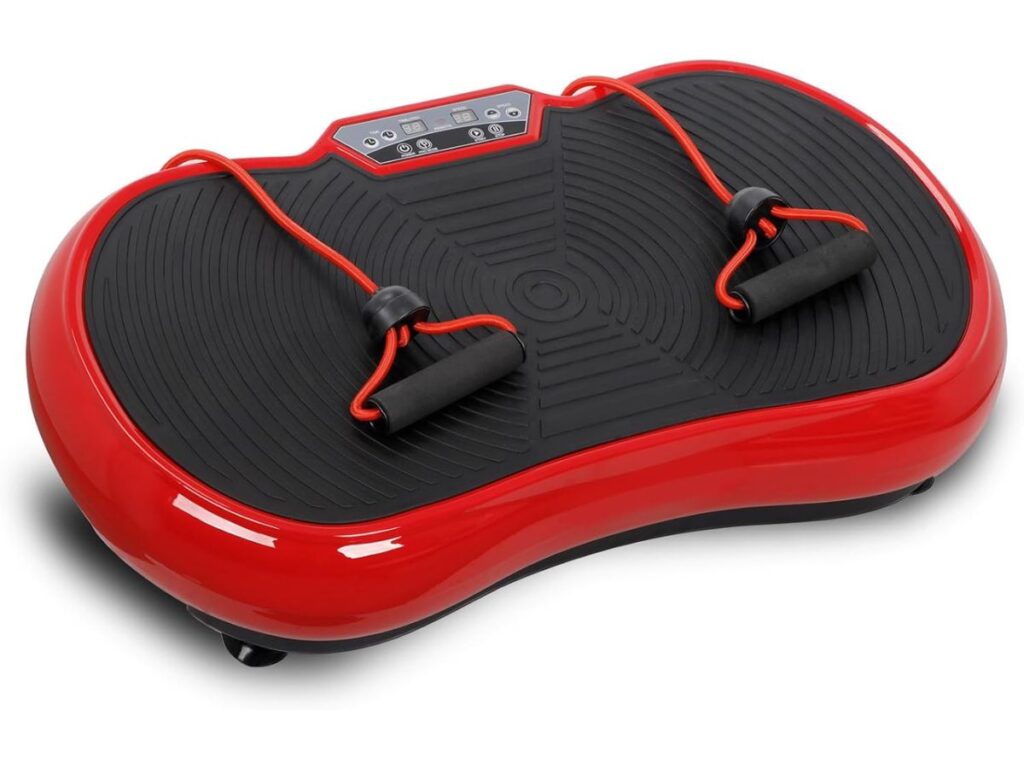
Conclusion
The right equipment can change everything. I’ve seen it firsthand.
In this guide, we covered 8 machines that help clients with osteoporosis move safely and build strength—without fear or strain.
Now it’s your turn. What’s stopping you from creating a safer space for your clients today?
Start small. Choose one piece. Our guidance could be the turning point in someone’s recovery.
Contact us today—let’s help you build a stronger, safer facility.
Related articles:
